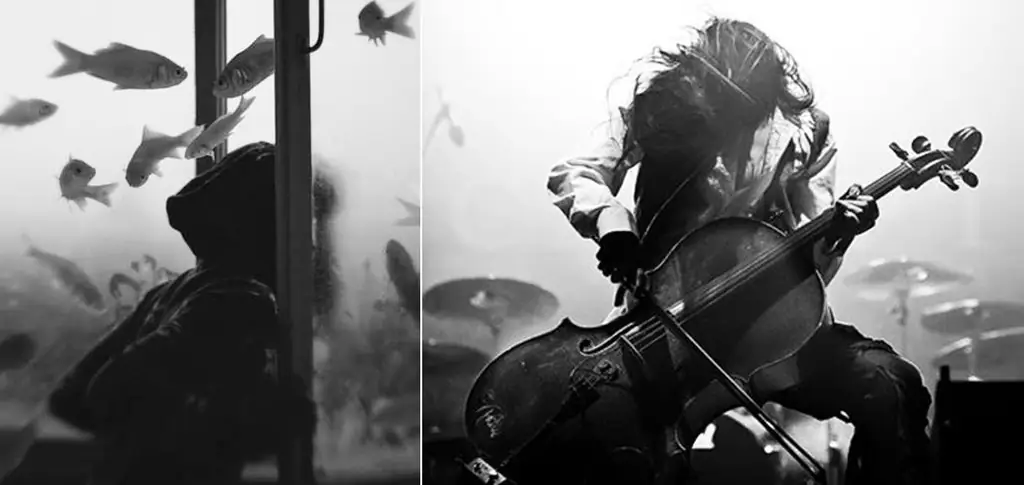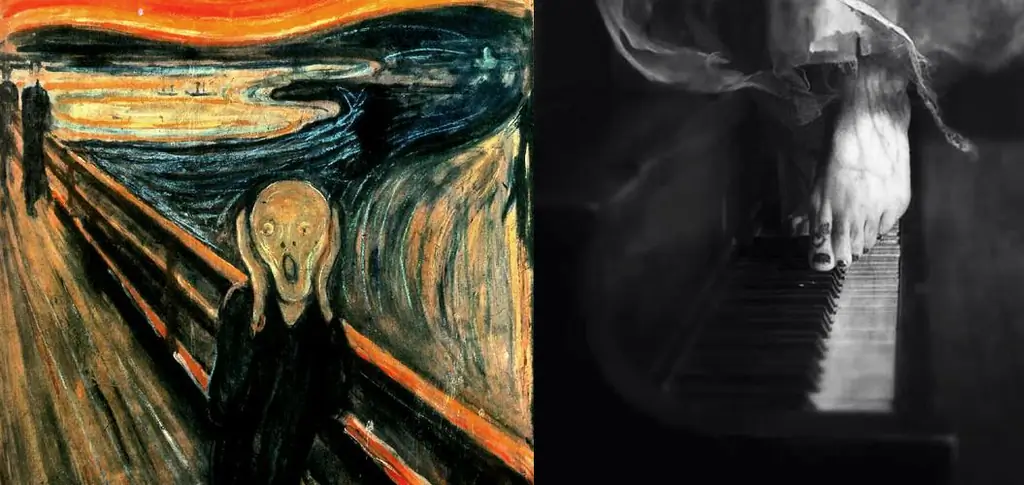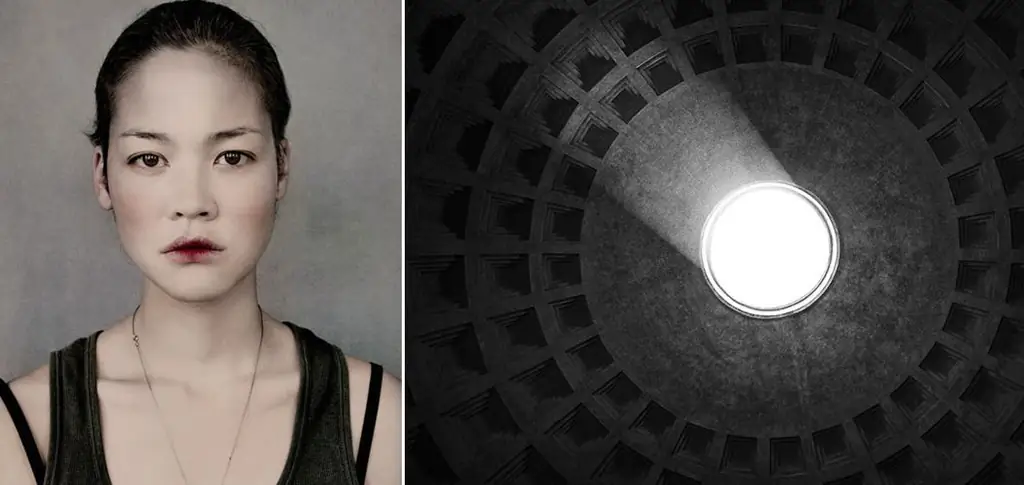- Author Adrian Jeff [email protected].
- Public 2023-12-17 05:06.
- Last modified 2025-01-24 14:09.
Silent scream, millions and silence for happiness
With a cry we come into this world, with a cry many of us go through life. And, it seems, for some, it replaces happiness. We bet you don't even think that screaming is really associated with happiness. That with a cry, like a jackhammer, we can knock out of a person the desire to be happy. More precisely, the desire remains, it does not disappear anywhere. The ways to achieve it are perverted.
With a cry we come into this world, with a cry many of us go through life. And, it seems, for some, it replaces happiness. We bet you don't even think that by screaming like a jackhammer, we can knock out of a person the desire to be happy. More precisely, the desire remains, it does not disappear anywhere. The ways to achieve it are perverted.
Many screams - different masks
Inside each of us there are emotions that you want to throw out a wild cry. But you and I are different, and the scream has a different face.

What is a cry for? For example, in the ancient world they shouted, warning of danger. And some of them can't really shout - they don't have enough voice. Others will not be in time, and they will not save themselves. Still others scream in falsetto, and even then after they managed to save their shirt, which is closer to the body. Wise nature has provided a solution: it has endowed some people with the ability to scream in such a way as to turn off the consciousness of those who hear this scream and trigger an instant reaction in them. This happens because this cry is endowed with certain vibrations that launch adrenaline into the blood in the maximum amount.
Yuri Burlan explains at the training "System Vector Psychology" that this special talent is due to the oral vector.
"An unchewed scream moves from the mouth."
It should be clarified that the oral does not just speak or shout. He demands to be listened to, and his speech seems to penetrate into the ear of the interlocutor, and then further into his psyche. He has the ability to induce by speaking, that is, to cultivate certain thought forms in the interlocutor, so much so that the interlocutor seems to be told obvious things. So oralists can make excellent storytellers, guides, and virtuoso lecturers.
For an oralist, screaming is a thought that does not fit in the head. Vladimir Mayakovsky somehow figuratively expressed: "People are scared - an unchewed cry moves from my mouth."
Oral screaming neutralizes the interlocutor. And woe to the one who fell under the hot hand of the oralist: he does not just scream, he attacks the victim, either raising or lowering his voice, convincingly attributing to her all the vices of the world, spitting out scraps of verbal dirt. Sometimes oral thought is not squeezed into the framework of decency (this is about them they say that they do not swear, but talk).
Scream in the night
But there are other screams too. "You won't hear them," as Remarque would say. And the writer Janusz Wisniewski claims that you can shout even in sign language.

These screams have their own peculiarity: they neutralize the screaming one. Sometimes on the spot, forever.
These are cries of emptiness, which the silent and sounding ones cannot bear. About hopelessness and lack of ideas. About universal longing and insane desires for change. A stagnation that never seems to end. About what an ordinary person does not notice, but for nothing they can not miss. They shout all the things that have not found rest.
The cry of humanity for $ 120 million
It's about sound people. They don't scream their pain, they spread it silently. Sometimes under bewildered looks and public applause. One of the most famous screams is the work of the same name by the Norwegian expressionist sound artist Edvard Munch, written in 1895. The most mysterious painting and an absolute record holder in price: in 2012, in 12 minutes at Sotheby's, it was sold for almost $ 120 million.
Before her, only two canvases by Picasso and a sculpture by Alberto Giacometti crossed the price line of $ 100 million. What is the secret of "Scream"? In an appeal to humanity, to the collective unconscious, as David Norman, co-chairman of the board of directors of Sotheby's, defined it. He is sure that everyone, regardless of nationality, beliefs or age, in the age of violence and self-destruction, at least once experienced the same existential feeling of horror. Art critics called the painting "prophetic", predicting "the 20th century with its two world wars, the Holocaust, environmental disasters and nuclear weapons."
Some of the figure on the canvas resembles a skeleton, others - an embryo, the third - a sperm. Someone guesses in her the image of the Peruvian mummy, which Munch allegedly saw at the World Exhibition in Paris in 1889. The sound artist himself describes his source of inspiration as follows: “I was walking along the path with two friends - the sun was setting - suddenly the sky turned blood red, I stopped, feeling exhausted, and leaned against the fence. I watched blood and flames over the bluish-black fjord and city. My friends went on, and I stood, trembling with excitement, feeling an endless cry piercing nature."
"Cry of Nature" (Der Schrei der Natur) - this is the original name of the picture. Today it remains to be seen whether it is the artist himself who reflexively defends himself from the cry of nature, or as a conductor he transmits this cry.
A little crazy
This version of Scream is one of four created by the artist. She has never been put on the market and has never been in public. But at the same time, it is she who is one of the most recognizable works of art in history, on a par with Van Gogh's Sunflowers or Malevich's Black Square.
The other three belong to Norwegian museums, they were kidnapped twice, but invariably returned without damage.
There is a version that the painting is partly the fruit of a mental disorder (they say the artist suffered from manic-depressive psychosis) and that Munch reproduced The Scream, “as if trying to get rid of it,” until he underwent treatment in the clinic. Munch himself wrote about himself like this: "Illness, madness and death are black angels who stood guard over my cradle and accompanied me all my life."
The XX century gave birth to many followers of Munch's work, replicating "The Scream". Here are just a few of them inspired by this painting: the famous mask from the movie "Scream", the appearance of the alien race "Silence" in the TV series "Doctor Who" and even one of the emojis added in Unicode version 6.0 - (face screaming in fear, U + 1F631).
Curse of munch or all mankind
The image of a damned painting was fixed behind Munch's flashy image. On the Internet, you can find many stories about how people who came into contact with the canvas then fell ill, quarreled with loved ones, fell into severe depression or suddenly died.

Then a museum employee, who accidentally dropped the canvas, was attacked by a terrible headache, because of which he eventually settled scores with himself. One week later, a museum worker who dropped the painting gets into a terrible car accident and breaks his legs, arms, several ribs, gets a severe concussion. One of the museum visitors, who touched the painting with his finger, burns alive during a fire in his own house.
At the training "System-vector psychology", this phenomenon is explained by the impressionability of people with a visual vector.
The soundman Munch speaks the language of the unconscious through a primitive, primary, root state - fear. Spectators are people with imaginative intelligence, very emotional by nature. In essence, the entire emotional amplitude of the visual vector fluctuates within two peak states: between fear and love. In tragic situations with a "damned" picture, the spectators fell into a certain state of the visual vector - fixed on fear.
This is a state of "in oneself", fear - for oneself, for one's life. By developing and realizing visual properties, a person transforms fear into love for others. In other words, in order to exclude suspiciousness and fixation on fears, it is necessary to correctly apply your vision, developing and realizing these properties.
A lifelong step for a person and a millimeter for society
They say that only the one who hears the cry of the soul of another person possesses true hearing. And a cry into the void can be heard by the echo of tomorrow. This is the task of the sound specialists. They, expressing themselves in space and time, choose: to offer a vessel with "dead" or "living" water to humanity.
But the problem is that they themselves do not understand their task. The growth of depressive moods is a litmus test of the fact that sound professionals are suffering today on a global scale. Sometimes they manage to feel something, like Munch. But where to go with these inner voids? What to do with these inner urges?

At Yuri Burlan's training "System-Vector Psychology", a new world is revealed for adult sound specialists. The source of their suffering is shown to them, it is explained what to do so that the subconscious mind more often rewards the carrier of the sound vector with a good mood. A sound engineer with systemic thinking suddenly begins to feel a thirst for life and psychological protection from depression. Already during the training, the sound engineer dawns: to be happy, he does not need to make great scientific discoveries, he needs to make at least a small contribution to the knowledge of the world. Simply put, as soon as the sound engineer begins to understand himself and understand his desires, he will automatically bring the whole of humanity closer at least a millimeter to understanding the place in the Universe.
But most importantly, Yuri Burlan's training provides the right guidelines on how to bring up sound children.
Listening to the silence
The hearing of such children is particularly sensitive. That is why the main thing that System Vector Psychology insists on is that there must be a healthy ecology of sound in the house where the sound person grows. Loud, harsh sounds and screams hurt the sound engineer, but this is far from the worst thing. The consequences of these wounds are terrible. The larger and sharper they are, the more the child tries to drown out the feeling of suffering.
At first he chooses loud music, mainly hard rock, trance. Deep bass, from which the walls of his room tremble, he covers himself at home, headphones - when he walks down the street. The systemic explanation is that subconsciously he tries to weaken the sensitivity of his hearing, and through this - to reduce the internal tension that causes a lack of development in him.
Heavy destructive music can be followed by drugs, suicide. No one is able to guess the magnitude of a particular sound void.
The sound engineer has a chance for healthy development when silence is respected in the house, if at the same time they do not try to "remake" a quiet, slightly withdrawn and calm child, give him time to be in this silence.
The time of silence is vital for him. For what? Listening to this silence, reflect on the similarity of the models of the atom and the solar system, about the countless number of worlds, about “to be or not to be”.
He can even depict this world in all its diversity, moreover, in detail and fanatical, as does the 11-year-old artist-prodigy Dusan Krtolica from Serbia. Using a regular black pen, the boy creates anatomically accurate and highly detailed drawings of prehistoric and modern animals and plants.
Dusan began to paint at the age of two, and by eight he already had two solo exhibitions on a national scale. With his works, he visited the USA, Australia and India. But a few years ago, relatives did not accept this boy's abnormality and were seriously worried about him.
Seeing his passion for drawing, they even turned to a psychotherapist for help! They calmed down only after the specialist assured that this hobby is harmless to the child's psyche, and noted the high level of Dushan's intelligence. Today the boy spends about 500 sheets a week on work.
As explained in the System Vector Psychology training, a sound engineer who has time to concentrate is quite socialized. So Dushan, despite his popularity, gets along well with his peers and often draws tattoos with a marker on the hands of classmates with the image of their favorite animals.
POST SCRIPTUM

Silence and screaming take up much more time and space in our lives than we often realize. No one likes it when a cry is directed at him, but we ourselves, sometimes, allow ourselves not to be held back in our emotions.
It's a different matter when you begin to feel your responsibility to the world. When you suddenly realize clearly that your cry today can cause drug addiction tomorrow. When you begin to see those subtle, sometimes elusive systemic connections in seemingly non-systematic things. When you feel from within how it depends on each of us which generation we will grow up next: mentally healthy or exhausted by depression and stunned by non-working antidepressants.
Are you still screaming?






